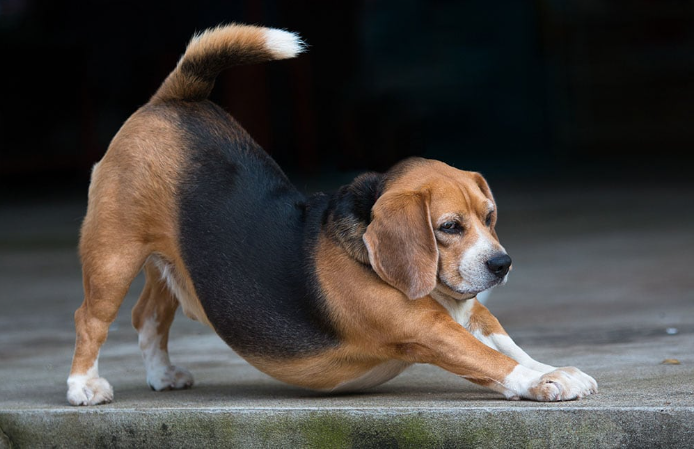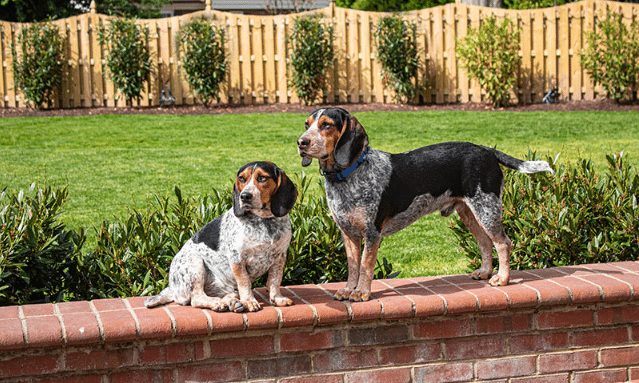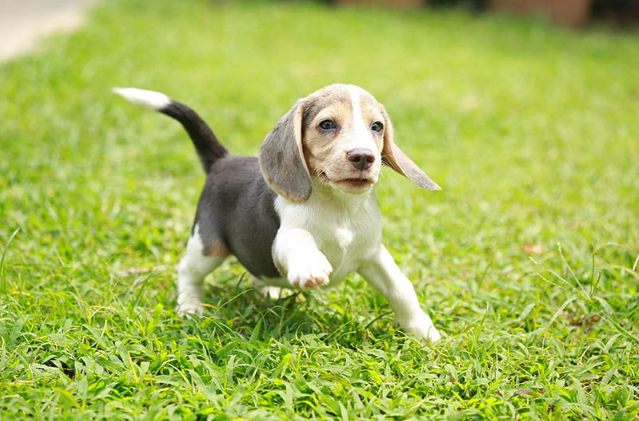Beagle Color Guide: Choose the Best Coat for Your New Pup

[ad_1]
Beagles are known for their friendly nature, iconic floppy ears, and distinctive baying howl, making them stand out. But did you know their charming personalities are matched by an equally fascinating variety of Beagle colors?
From tri-color coats to unique ticking patterns, these adorable pups come in shades that make every Beagle encounter feel like ‘love at first sight.’ No wonder they often steal households’ hearts, tempting you to bring one home when you see those soulful eyes and wagging tails.
This blog delves into the spectrum of Beagle colors, exploring their genetic makeup, common patterns, and other needs to be followed if you plan to get a Beagle puppy.
Fun fact: Beagles are commonly regarded as lab dogs for their association with veterinary research. However, a study showed that only 1.9% of veterinary studies are conducted on Beagles. More studies are conducted on German Shepherds (7.3%), Labrador Retrievers (6.7%), and Golden Retrievers (4.7%). Guess the Beagles are more like the underdog of veterinary research.
The Beagle’s Colorful Coat: A Genetic Tapestry
The diversity of Beagle colors results from a complex interplay of genetic factors. While the exact genes responsible for these variations are still being studied, it is clear that multiple genes contribute to the final coat color.
The National Beagle Club writes on its website that “any true hound color” is a Beagle color. According to the American Kennel Club (AKC), Beagles can have 25 color combinations derived from 7 primary colors: Black, Blue, Brown, Lemon, Red, Tan, and White. Furthermore, purebred Beagles can have 6 distinct markings: Ticked, Spotted, Brown, Black, Tan, and White.
Typical Beagle colors include tricolor, lemon, red, and blue, but variations like chocolate and orange can also be found. Nevertheless, certain color expressions may be deceptive; therefore, it is essential to address them in advance.
Red: A deep, dark orange color, often called mahogany.
Blue: A faded black that may appear metallic in sunlight; blue Beagles have blue-tinted noses and paw pads.
Lemon: Usually refers to a lemon and white coat, with golden patches developing over time; solid lemon Beagles are rare.
Bluetick & Redtick: Freckle-like spots in diluted black or shades of orange to dark red.
Fawn, Tan, & Brown: Gradations from light (fawn) to chocolate-like dark brown.
Chocolate, Lavender, Lilac, and Silver: These are not official AKC colors; they typically fall under existing categories like blue, fawn, tan, or brown.
Now that we’ve explained the color terms, let’s dive into the possible Beagle color combinations.
| Solid Color Beagles | Bicolor Beagles | Tricolor Beagles |
|---|---|---|
| Black | Black & Tan | Black, Fawn & White |
| Blue | Black & White | Black, Red & White |
| Brown | Blue & White | Black, Tan & Bluetick |
| Lemon | Brown & White | Black, Tan & White |
| Red | Lemon & White | Black, White & Tan |
| Tan | Red & Black | Red, Black & White |
| White | Red & White | White, Black & Tan |
| Tan & White | Blue, Tan & White | |
| Black, Tan & Redtick | ||
| Brown, White & Tan |
Black
An all-black Beagle is incredibly rare. These pearls are hard to find despite being an AKC-recognized color. Generally, some dogs have a few dark-colored areas on their chest or neck, giving the impression of being a solid black color. And let’s admit it, you probably never would’ve guessed the dog from the picture is a Beagle.
Blue
People usually don’t associate blue with Beagles; it’s more common in breeds like Pitbulls or American Bullies. However, blue Beagles do exist, though they’re rare. A dilution gene fades the black eumelanin pigment to blue, affecting their noses, eye rims, and paw pads. These Beagles often have blue eyes, too!
Brown
Often called the chocolate Beagle, this color is scarce. Most solid brown Beagles have white markings on their chest, face, and legs. This unique brown color results from a recessive gene that changes black fur to brown. Since black Beagles are already uncommon, finding a chocolate Beagle is even rarer!
Lemon
Lemon Beagles are genuinely distinctive, with their yellowish-to-golden coats and minimal white markings. Most have black noses, though some may have brown ones. Because of their unique coloring, a black coat isn’t possible for Lemon Beagles, so they can’t have a tricolor pattern. This rare and striking coat makes them stand out among Beagle varieties.
Red
Red Beagles sports a reddish tint that ranges from rusty red to orange, giving them a vibrant and striking appearance. Many people consider this rich hue one of the most beautiful Beagle colors. These dogs may have a few minor white spots but are generally subtle.
Tan
A tan Beagle features a copper-colored coat without any black mask or patches. Despite their purebred status, their appearance might make some people mistake them for Dachshunds if only their face is seen. Tan Beagles often have subtle white markings on their chest, stomach, and paws, which are typically minor and not very prominent.
White
Pure white Beagles are extremely rare and often result from genetic abnormalities, which can lead to health issues. This color is not considered part of the Beagle breed standard due to its association with potential health problems. While some Beagles may appear white as puppies, darker spots usually develop as they mature.
Black & Tan Beagle
Black and tan Beagles are known for their striking appearance. Their backs, sides, and tails are predominantly black, while the chest, legs, and neck are rich tan. Unlike the more common tricolor Beagles, this combination lacks white, making it distinct and eye-catching. The black and tan coloration is similar to that found in Dobermans, often confusing people about the Beagle’s true breed.
Black & White Beagle
Black and white Beagles feature a classic combination that is elegant and simple. These Beagles typically have a black saddle-like pattern on their backs, with the rest of their body, including the chest, legs, and tail tip, covered in white. Despite not being a standard AKC color combination, black and white Beagles are recognized by other dog breed clubs like the UKC and FCI.
Blue & White Beagle
Blue and white Beagles have a lighter black color on their backs, giving off a bluish hue. The blue color is enhanced by white patterns on the chest, legs, and muzzle. Even though they are not as popular as other Beagle color combinations, their distinct appearance makes them desirable for those searching for a unique Beagle companion.
Brown & White Beagle
Brown and white Beagles, sometimes called “hare pied,” showcase a simple yet charming bicolor coat. The brown patches are usually scattered across a predominantly white body, with no presence of black. The brown spots vary in size, creating a pattern that is both classic and appealing.
Lemon & White Beagle
Lemon and white Beagles have a delightful and distinctive appearance. Their coats are white with pale yellow or cream-colored spots, mainly on the ears, back, and tail. This combination gives them a soft, warm look quite different from the darker shades typically associated with Beagles.
Red & Black Beagle
Red and black Beagles are a bicolor variety with a striking appearance. The primary red coloration covers most of the body, while the head and back have black markings. These Beagles are less standard than the tricolor variants but are still highly regarded for their unique color combination.
Red & White Beagle
Red and white Beagles resemble lemon and white Beagles but have a more intense and richer red hue. These Beagles display white markings on their legs, chest, and tail tips, while the remainder of their bodies are coated in red. Their noses and eye rims are usually dark, adding to their striking appearance.
Tan & White Beagle
Tan and white Beagles have a light brown (tan) coat with prominent white areas. Their backs are generally tan, while the legs, chest, tail, and sometimes face feature white markings. This color combination gives them a soft, gentle, endearing appearance.
Black, Fawn & White Beagle
Black, fawn, and white Beagles have a beautiful mix of colors. The back is usually covered in black, while the fawn color adds a softer, muted hue that lightens the overall appearance. The white is mainly present on the chest, legs, and muzzle, providing a lovely contrast to the darker shades. Though not standard according to the AKC, this combination is quite popular among Beagle enthusiasts.
Black, Red & White Beagle
A Beagle with a mix of black, red, and white colors is vibrant. Most of the back is black; however, the ears, face, and occasionally the top of the head are reddish-brown, bringing a touch of warmth to the dog’s look. White covers the legs, chest, and tip of the tail, providing a nice contrast. This mix results in a Beagle appearance that is both vibrant and prestigious.
Black, Tan & Bluetick Beagle
Black, tan, and bluetick Beagles are a stunning combination. These dogs feature black and tan markings on their heads, much like other Beagles. However, their bodies are covered in a bluetick pattern, resembling the coat of an Australian Shepherd. The ticking effect results in small blue or gray spots on a lighter base coat, making these Beagles truly unique.
Black, Tan & White Beagle
Black, tan, and white Beagles are recognized as one of this breed’s most classic color mixes. The dogs display a black saddle on their back, tan coloring on their head and ears, and white on their legs, chest, and tail tip. The tricolor coat is closely linked to the Beagle breed, making it a favorite option for numerous dog lovers.
Black, White & Tan Beagle
Black, white, and tan Beagles have a more prominent black patch on their back than other tricolor Beagles. The color white is the primary color, while tan is more muted and typically seen on the head and eye areas. This mix results in a balanced, classic appearance for the Beagle.
Red, Black & White Beagle
Rare variations of the classic tricolor Beagle include red, black, and white Beagles. Their foundation layer is red, with black and white designs. The red color gives a more intense shade, while the combination of black and white patches produces a pleasing and attention-grabbing appearance.
White, Black & Tan Beagle
The Beagles have predominantly white fur, black patterns on the back, and tan accents near the head and ears. White, black, and tan Beagles have a more even distribution of color, creating a lighter and more refined interpretation of the traditional tricolor design.
Blue, Tan & White Beagle
Blue, tan, and white Beagles have a coat that contains a distinctive bluish-gray shade, which is a diluted version of the black typically seen in standard tricolor Beagles. The tan and white patterns resemble the classic tricolor Beagle markings, giving off a subtle yet bold look known as a “silver tricolor.”
Black, Tan & Redtick Beagle
These Beagles exhibit a mix of black, tan, and redtick markings. Redtick Beagles, unlike Bluetick ones, display small red or tan spots on a lighter base coat. Adding black to these dogs creates a tri-colored look, making them unique and visually appealing.
Brown, White & Tan Beagle
Beagles in brown, white, and tan shades display a lovely mix of cozy colors. Their usual back color is brown, while their chest, legs, and tail tip are white. Tan markings enhance their appearance by adding depth, commonly seen near the head and ears, resulting in a cohesive and attractive appearance.
Choosing the Right Beagle Color
With so many beautiful color combinations, picking your perfect Beagle can feel overwhelming! But fear not, future Beagle owner! Here are some factors that go beyond their coat color:
- Temperament: This extends past the cute floppy ears and expressive eyes. Beagles are recognized for their friendly nature, curiosity, and vitality. Are you ready for a lively dog who may be a bit stubborn at times?
- Grooming Needs: While all Beagles require regular brushing, some colors might show dirt or shedding more quickly than others. Consider your lifestyle and how much time you can dedicate to grooming. Don’t forget to check out the grooming tips for a Beagle before bringing home a Beagle.
- Health: While generally healthy, some rare coat colors might be linked to underlying health conditions. Research your desired color and talk to a breeder about potential health concerns.
- Meet the puppy: Meeting a Beagle in person is the most effective way to see if they are a suitable match for you. Devote some time to meet the puppy to determine if their character matches yours. Also, check the Beagle cost before you make up your mind.
- Don’t be afraid to ask questions: The breeder or shelter may offer essential details on the puppy’s personality and any documented health problems.
Conclusion
Beagles are available in multiple colors, enhancing this popular breed’s appeal. It’s crucial to bear in mind that every dog is one of a kind. Finding the Beagle that matches your personal lifestyle and availability is essential.
When selecting your furry friend, consider factors like temperament, grooming requirements, and general well-being. This responsible approach will ensure that every Beagle, regardless of color, can bring boundless happiness into your life.
[ad_2]
Source link















